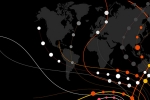Last year, we explored the pivotal role of assurance in the evolving regulatory framework of the Sustainable Finance Disclosure Regulation (SFDR), focusing on five key themes:
- The constant evolution of SFDR: adapting to a labelling regime – examining the potential shift from a disclosure-focused regime to a labelling (or product categorisation) regime and its transformative implications.
- Regulatory focus intensifies – highlighting the increasing scrutiny from regulators.
- Value addition for investors: non-financial information as a competitive edge – emphasising how assured non-financial information can differentiate financial products in a sustainability-conscious market.
- Assurance providers: elevating stakeholder confidence – exploring the role of assurance providers in enhancing trust and credibility in sustainability disclosures.
- Convergence of CSRD and SFDR: A harmonised future – analysing the alignment of these frameworks to create a cohesive reporting and assurance landscape.
This year, we revisit these themes to evaluate how the arguments we advanced have aged in the light of ongoing regulatory and market developments. Have shifts toward labelling materialised or gained momentum? How has the regulatory landscape evolved, and what lessons can be drawn from implementations? Are financial market participants realising the anticipated benefits of assured non-financial information? And crucially, how has the alignment between SFDR and CSRD progressed?
By examining these questions, this follow-up article aims to assess the practical impact of the trends we identified and provide fresh insights for navigating the ever-evolving regulatory landscape. It is both a reflection and a forward-looking guide for stakeholders committed to fostering transparency, accountability, and sustainability in finance.

The constant evolution of SFDR: adapting to a labelling regime
In 2023, the SFDR landscape was characterised by discussions of a potential paradigm shift from a product transparency regime to a labelling or product categorisation regime. This shift would emphasise sustainability credentials over descriptive disclosures, demanding robust assurance to maintain credibility in sustainability claims.
We have reviewed the responses to the targeted consultation on implementing the SFDR. It is evident that there is strong momentum toward categorising financial products. However, this categorisation must be approached thoughtfully to be effective, guided by objective criteria. It should include a clear articulation of the product’s sustainability intentions, a detailed explanation of the ESG strategies to be employed, and the establishment of credible KPIs. While this approach will provide greater clarity for investors, it also introduces operational challenges for financial market participants (FMPs) in adhering to predefined criteria. Additionally, assurance providers have seen growing demand as FMPs will strive to validate their labels amid increased scrutiny or the quest of a fair perception. The ESMA guidelines on fund names further underscore the growing commitment to categorising and clarifying the range of products offered, reinforcing the push for greater transparency and consistency in the investment landscape.
Regulatory focus intensifies
We had highlighted regulators’ growing interest in the quality of non-financial information, illustrated by initiatives we have seen in Luxembourg and Ireland around thematic reviews or data collection exercises. These signalled a shift towards a more comprehensive evaluation of financial products' sustainability aspects.
In 2024, regulatory scrutiny reached new heights. The CSSF emphasised its priorities in supervising sustainability regulations, particularly ensuring IFMs' compliance with the SFDR and Taxonomy Regulation. Core focus areas included integrating sustainability risks into organisational frameworks, verifying adherence to disclosure requirements, ensuring consistency in fund documentation and marketing materials, and conducting portfolio analyses to align holdings with declared objectives. The CSSF's annual report and other publications throughout the year highlighted sanctions imposed on IFMs for non-compliance. On top of that, it would be needless to state the exorbitant fines imposed by the regulator in a territory that has not been bullish towards ESG practice in the last months, which clearly demonstrates that it is not only a domestic market trend.
Value addition for investors: non-financial information as a competitive edge
The shift towards responsible investing was recognised as a transformative trend, with non-financial information emerging as a strategic differentiator for financial products. Assured SFDR annexes were seen as crucial for attracting ESG-conscious investors and reversing greenwashing concerns.
This year, the demand for non-financial information surged, becoming a defining trend in the investment world. Investors increasingly favoured products backed by independent assurance, recognising the growing importance of verified sustainability claims. Data has shown a marked increase in inflows into funds with verifiable sustainability credentials, a clear signal of trust in transparent practices. Meanwhile, the reputational risks associated with greenwashing have prompted many financial market participants (FMPs) to proactively engage assurance services, aiming to bolster investor confidence and credibility.
As a result, our practice has been exceptionally busy, with a significant uptick in demand for substantiating sustainability reports over the past year. This surge spans across all asset classes, reflecting the broader industry's commitment to verifiable sustainability and responsible investing.
Convergence of CSRD and SFDR: A harmonised future
The growing alignment between CSRD and SFDR requirements was seen as a pivotal moment in sustainability reporting, with harmonised metrics promising to reduce reporting inefficiencies and enhance transparency.
In 2024, the convergence between the Corporate Sustainability Reporting Directive (CSRD) and the Sustainable Finance Disclosure Regulation (SFDR) reached a pivotal milestone, marking a significant step forward in sustainability reporting and compliance. The introduction of harmonised reporting and materiality assessments provided organisations with the tools to simplify and streamline their compliance processes, ensuring greater consistency and clarity across the board.
Entities subject to both directives found themselves benefiting from enhanced clarity and reduced duplication in reporting requirements. This integration not only alleviated administrative burdens but also paved the way for more coherent and comprehensive sustainability disclosures. By aligning key frameworks, the convergence has empowered companies to meet regulatory expectations more effectively while simultaneously improving the transparency and reliability of their sustainability performance.
Conclusion
The developments of 2024 reflect a financial landscape in flux, shaped by regulatory advancements, investor demands, and industry adaptations. From the shift towards labelling to the intensification of regulatory focus and the deepening convergence of CSRD and SFDR, the journey toward sustainable finance is increasingly intertwined with assurance and transparency.
As we look ahead to 2025, the financial sector stands at a critical juncture. Organisations that embrace these changes as opportunities—investing in robust non-financial reporting, aligning with evolving regulations, and engaging assurance providers—are not just ensuring compliance. They are building the foundations of trust, integrity, and resilience in a rapidly transforming world.
But, we’ll see about that in our edition covering 2025!








